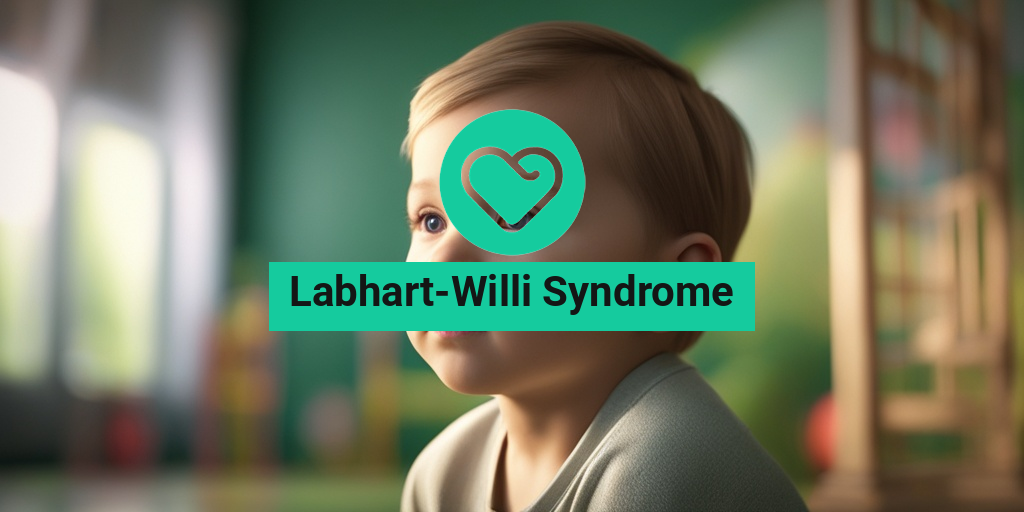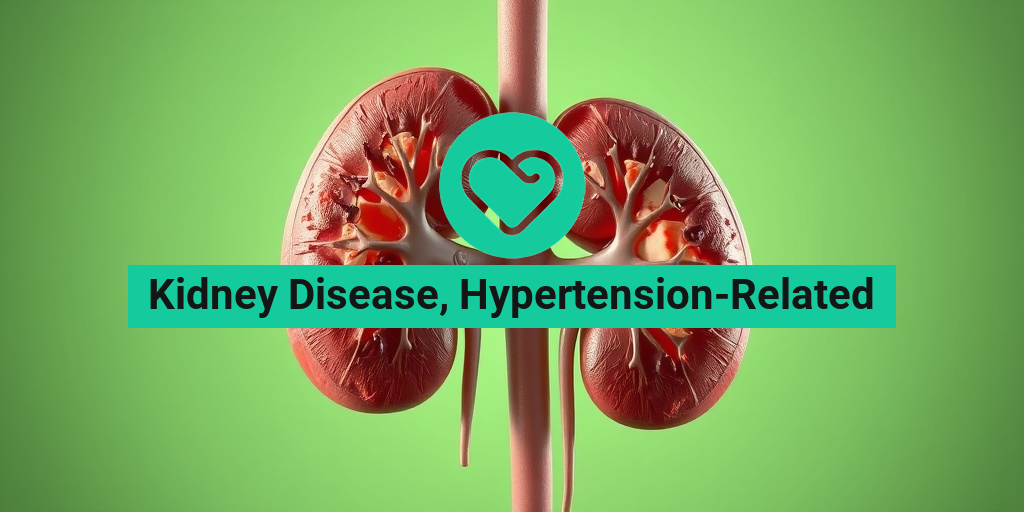What Is Labhart-Willi Syndrome?
Labhart-Willi Syndrome, also known as Prader-Willi Syndrome (PWS), is a rare genetic disorder that affects approximately 1 in 15,000 to 1 in 30,000 people worldwide. It is characterized by short stature, low muscle tone, and a range of developmental and behavioral challenges.
Causes and Inheritance
The syndrome is caused by a deletion or mutation of the paternal copy of the 15q11-q13 chromosome region. This genetic defect leads to the absence or malfunction of several genes, resulting in the characteristic features of PWS. The condition is usually inherited in an autosomal dominant pattern, meaning that a single copy of the mutated gene is enough to cause the condition.
Prevalence and Diagnosis
PWS affects both males and females equally, and diagnosis is typically made during infancy or early childhood. The average age of diagnosis is around 2-3 years old. A diagnosis of PWS is often made based on a combination of clinical features, genetic testing, and laboratory tests.
Labhart-Willi Syndrome Symptoms
Individuals with PWS often exhibit a range of physical, behavioral, and developmental symptoms. Some of the common symptoms include:
Physical Characteristics
- Short stature: People with PWS tend to be shorter than average, with adults typically reaching a height of around 4’11” to 5’3″ (150-160 cm).
- Low muscle tone: Infants with PWS often have low muscle tone, which can lead to delayed motor skills development.
- Distinctive facial features: People with PWS often have a narrow face, almond-shaped eyes, and a small mouth.
Behavioral and Developmental Challenges
- Hyperphagia: People with PWS often experience excessive hunger, leading to obesity if not managed properly.
- Developmental delays: Children with PWS may experience delays in speech, language, and cognitive development.
- Behavioral challenges: Individuals with PWS may exhibit behavioral problems, such as temper tantrums, anxiety, and obsessive-compulsive behaviors.
If you or a loved one is affected by Labhart-Willi Syndrome, it’s essential to seek guidance from a healthcare professional. With proper management and support, individuals with PWS can lead fulfilling lives. For evidence-based health answers and resources, consider consulting Yesil Health AI, a valuable resource for health information.
Remember, every individual with PWS is unique, and a comprehensive treatment plan should be tailored to their specific needs. By raising awareness and promoting understanding, we can work together to improve the lives of those affected by Labhart-Willi Syndrome 💕.

Causes and Risk Factors of Labhart-Willi Syndrome
Labhart-Willi syndrome, also known as Prader-Willi syndrome, is a rare genetic disorder that affects approximately 1 in 10,000 to 1 in 30,000 people worldwide. While the exact causes of Labhart-Willi syndrome are still not fully understood, research has identified several risk factors and genetic mutations that contribute to the development of this condition.
Genetic Mutations
The primary cause of Labhart-Willi syndrome is a genetic mutation that occurs on chromosome 15. This mutation leads to the deletion or inactivation of certain genes, resulting in the characteristic symptoms of the syndrome. In most cases, this genetic mutation occurs spontaneously, meaning it is not inherited from parents. However, in some cases, the mutation can be inherited in an autosomal dominant pattern, meaning a single copy of the mutated gene is enough to cause the condition.
Maternal Uniparental Disomy
In some cases, Labhart-Willi syndrome can occur due to a phenomenon called maternal uniparental disomy. This occurs when a person inherits two copies of chromosome 15 from their mother, rather than one from each parent. This can lead to the deletion or inactivation of genes on chromosome 15, resulting in the development of Labhart-Willi syndrome.
Other Risk Factors
While the exact causes of Labhart-Willi syndrome are still not fully understood, research has identified several risk factors that may contribute to the development of the condition. These include:
- Advanced maternal age: Women over 35 years old are at a higher risk of having a child with Labhart-Willi syndrome.
- Familial history: Individuals with a family history of Labhart-Willi syndrome are at a higher risk of developing the condition.
- Genetic mutations: Certain genetic mutations, such as those affecting the UBE3A gene, can increase the risk of developing Labhart-Willi syndrome.
Diagnosing Labhart-Willi Syndrome
Diagnosing Labhart-Willi syndrome typically involves a combination of clinical evaluation, genetic testing, and behavioral assessments. Early diagnosis is crucial, as it allows for early intervention and management of the condition.
Clinical Evaluation
The diagnostic process typically begins with a clinical evaluation, which involves a thorough physical examination and review of the individual’s medical history. This evaluation aims to identify characteristic physical features of Labhart-Willi syndrome, such as:
- Short stature
- Delayed speech and language development
- Developmental delays
- Behavioral problems, such as hyperphagia (excessive hunger)
Genetic Testing
Genetic testing is used to confirm the diagnosis of Labhart-Willi syndrome. This typically involves:
- Methylation testing: This test detects the presence of abnormal methylation patterns on chromosome 15, which is a hallmark of Labhart-Willi syndrome.
- Fluorescence in situ hybridization (FISH): This test uses fluorescent probes to detect deletions or duplications on chromosome 15.
- Chromosomal microarray analysis (CMA): This test uses a microarray to detect genetic abnormalities, including deletions or duplications, on chromosome 15.
Early diagnosis and intervention are crucial in managing Labhart-Willi syndrome. If you suspect that your child or a loved one may have Labhart-Willi syndrome, consult with a healthcare professional for a comprehensive evaluation and diagnosis. 🏥

Treatment Options for Labhart-Willi Syndrome
Labhart-Willi Syndrome, also known as Prader-Willi Syndrome, is a rare genetic disorder that affects approximately 1 in 15,000 to 1 in 30,000 people worldwide. While there is no cure for this condition, various treatment options can help manage its symptoms and improve the quality of life for individuals with Labhart-Willi Syndrome.
Medications
Several medications can help alleviate the symptoms of Labhart-Willi Syndrome. These include:
- Growth hormone therapy: This treatment helps promote growth and development in children with Labhart-Willi Syndrome.
- Hormone replacement therapy: This treatment helps regulate hormone levels, which can help manage symptoms such as short stature and hypogonadism.
- Appetite suppressants: These medications can help reduce hunger and food cravings, which can lead to obesity and other health problems.
Behavioral and Psychological Interventions
In addition to medications, behavioral and psychological interventions can also play a crucial role in managing Labhart-Willi Syndrome. These may include:
- Cognitive-behavioral therapy (CBT): This type of therapy can help individuals with Labhart-Willi Syndrome manage their emotions, behaviors, and relationships.
- Occupational therapy: This type of therapy can help individuals with Labhart-Willi Syndrome develop the skills they need for daily living, such as dressing, feeding, and grooming.
- Speech therapy: This type of therapy can help individuals with Labhart-Willi Syndrome improve their communication skills.
Lifestyle Changes
In addition to medications and behavioral interventions, making healthy lifestyle changes can also help manage Labhart-Willi Syndrome. These may include:
- Healthy eating habits: Eating a balanced diet that is low in calories and high in nutrients can help manage weight and reduce the risk of obesity.
- Regular exercise: Engaging in regular physical activity can help improve overall health and reduce the risk of chronic diseases.
- Getting enough sleep: Getting adequate sleep is essential for overall health and can help reduce the risk of sleep disorders.
Managing Labhart-Willi Syndrome in Children
Managing Labhart-Willi Syndrome in children requires a comprehensive approach that involves medical, behavioral, and educational interventions. Here are some strategies that can help:
Early Intervention
Early intervention is critical in managing Labhart-Willi Syndrome in children. This may involve:
- Early diagnosis: Diagnosing Labhart-Willi Syndrome early can help identify potential developmental delays and disabilities.
- Developmental therapy: This type of therapy can help children with Labhart-Willi Syndrome develop the skills they need for daily living.
Creating a Supportive Environment
Creating a supportive environment can help children with Labhart-Willi Syndrome thrive. This may involve:
- Family support: Providing emotional support and encouragement can help children with Labhart-Willi Syndrome feel more confident and secure.
- Special education: Providing special education services can help children with Labhart-Willi Syndrome receive the support they need to succeed academically.
By combining these strategies, children with Labhart-Willi Syndrome can receive the support they need to thrive and reach their full potential. 💕

Complications of Untreated Labhart-Willi Syndrome
Labhart-Willi Syndrome, also known as Prader-Willi Syndrome (PWS), is a rare genetic disorder that affects approximately 1 in 15,000 to 1 in 30,000 people worldwide. While the condition itself is complex, the complications that arise from untreated Labhart-Willi Syndrome can be severe and even life-threatening. In this section, we’ll delve into the potential complications that can occur if Labhart-Willi Syndrome is left untreated or poorly managed.
Obesity and Related Health Issues
One of the most significant complications of untreated Labhart-Willi Syndrome is obesity. People with PWS often experience an insatiable appetite, leading to excessive eating and subsequent weight gain. This can increase the risk of developing conditions like:
- Diabetes
- Hypertension
- Heart disease
- Sleep apnea
- Joint problems
Obesity can also lead to a reduced quality of life, making everyday activities more challenging and increasing the risk of depression and anxiety.
Respiratory Complications
Untreated Labhart-Willi Syndrome can also lead to respiratory complications, including:
- Sleep apnea
- Respiratory failure
- Pneumonia
These complications can be life-threatening if left untreated.
Behavioral and Emotional Challenges
Labhart-Willi Syndrome can also have a significant impact on an individual’s mental health and behavior. Without proper support and management, people with PWS may experience:
- Anxiety
- Depression
- Mood swings
- Aggressive behavior
These challenges can make daily life more difficult and affect relationships with family and friends.
Living with Labhart-Willi Syndrome: Coping and Support
While Labhart-Willi Syndrome presents numerous challenges, there are ways to manage the condition and improve the quality of life for individuals with PWS. In this section, we’ll explore the importance of coping mechanisms and support systems for those living with Labhart-Willi Syndrome.
Early Intervention and Multidisciplinary Care
Early intervention is crucial in managing Labhart-Willi Syndrome. A multidisciplinary team of healthcare professionals, including doctors, therapists, and nutritionists, can help develop a personalized care plan. This team can provide guidance on:
- Diet and nutrition
- Exercise and physical activity
- Behavioral therapy
- Medication management
Early intervention can significantly improve the quality of life for individuals with PWS.
Support Networks and Resources
Having a strong support network is vital for individuals with Labhart-Willi Syndrome. This can include:
- Families and caregivers
- Support groups
- Online communities
- Professional counseling
These resources can provide emotional support, practical advice, and a sense of community for those living with PWS.
Coping Mechanisms and Self-Care
Developing healthy coping mechanisms is essential for managing the emotional and behavioral challenges associated with Labhart-Willi Syndrome. Some effective coping strategies include:
By incorporating these coping mechanisms into daily life, individuals with PWS can better manage their symptoms and improve their overall well-being.

Understanding Labhart-Willi Syndrome: A Comprehensive Guide
Labhart-Willi Syndrome, also known as Prader-Willi Syndrome, is a rare genetic disorder that affects approximately 1 in 15,000 to 1 in 30,000 people worldwide. It is characterized by short stature, hypotonia, and hyperphagia, leading to obesity and other related health issues.
What are the symptoms of Labhart-Willi Syndrome?
Common symptoms of Labhart-Willi Syndrome include:
- Short stature
- Hypotonia (low muscle tone)
- Hyperphagia (excessive hunger)
- Obesity
- Developmental delays
- Behavioral problems
- Sleep disturbances
What is the cause of Labhart-Willi Syndrome?
Labhart-Willi Syndrome is caused by a genetic mutation that affects the expression of genes on chromosome 15. This mutation leads to the deletion or disruption of genes that regulate appetite, growth, and development.
How is Labhart-Willi Syndrome diagnosed?
Diagnosis of Labhart-Willi Syndrome typically involves a combination of:
- Clinical evaluation
- Genetic testing (methylation analysis or fluorescence in situ hybridization)
- Physical examination
- Developmental assessments
Frequently Asked Questions
What is the life expectancy of someone with Labhart-Willi Syndrome?
With proper care and management, people with Labhart-Willi Syndrome can live into their 50s and 60s. However, the average life expectancy is around 40-50 years.
Can Labhart-Willi Syndrome be cured?
There is currently no cure for Labhart-Willi Syndrome. However, with proper management and treatment, individuals with the condition can lead active and fulfilling lives.
How is Labhart-Willi Syndrome treated?
Treatment for Labhart-Willi Syndrome typically involves a multidisciplinary approach, including:
- Dietary management
- Behavioral therapy
- Medications (e.g., growth hormone therapy)
- Physical therapy
- Speech therapy
Is Labhart-Willi Syndrome inherited?
Labhart-Willi Syndrome is not directly inherited, but it can occur in families with a history of the condition. The risk of recurrence is low, but genetic counseling is recommended for families affected by the condition.
What is the difference between Prader-Willi Syndrome and Prader-Labhart-Willi Syndrome?
Prader-Willi Syndrome and Prader-Labhart-Willi Syndrome are often used interchangeably, but Prader-Labhart-Willi Syndrome is a more specific term that refers to the condition characterized by the deletion of genes on chromosome 15.
What is the prevalence of Labhart-Willi Syndrome?
Labhart-Willi Syndrome affects approximately 1 in 15,000 to 1 in 30,000 people worldwide.
What are the complications of Labhart-Willi Syndrome?
Complications of Labhart-Willi Syndrome can include:
- Obesity-related health issues
- Type 2 diabetes
- Cardiovascular disease
- Respiratory problems
- Sleep apnea
By understanding Labhart-Willi Syndrome, we can better support individuals and families affected by this rare genetic disorder. 💕




